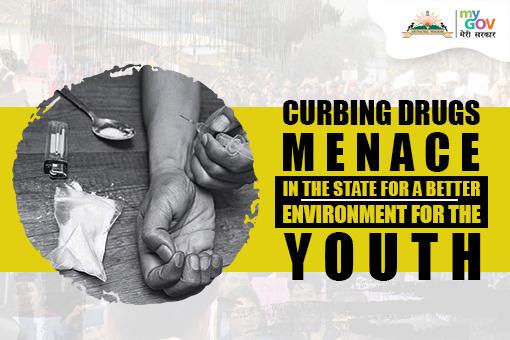Hardcore drugs, tobacco and alcohol are chief substances consisting of underlying toxic ingredients, that may lead to irreversible health damage or untimely demise of an individual. And the bitter ground reality is that more than half of the substance abusers are youths. And more often than not, they start very young.
Children may learn what they perceive from their environment, be it under the boundary of their home and surveillance, the premises of the educational institution and supervision or simply around peer groups outside in the recreational zones. We can never be too careful when it comes to unanticipated addiction to lethal substances. Young minds tend to be naive hence, they get deeper into such habits, even when they want to get out of the addiction. And it is inevitable that once an individual falls into the trap of addiction, it is relatively harsh to come back to sobriety and fit into the norms of society.
Extreme addiction to illicit substances also has a higher likelihood in carving the path to criminal and unlawful directions. Instances of addiction and withdrawal have led to sinful crimes such as murder, smuggling, robbery and kidnapping amongst others. However, the consequences of substance addiction aren't limited to criminal activities alone. It can drastically affect one’s mental and physical health to the point of no return; in extreme cases, it may also lead to death.
Keeping the unfavourable aspects of toxic substance consumption as context, MyGov Arunachal invites you to share your valuable suggestions on measures to tackle drug menace-related issues in the state.













BrahmDevYadav 2 years 8 months ago
How does tobacco affect the brain?
As with drugs such as cocaine and heroin, nicotine activates the brain's reward circuits and also increases levels of the chemical messenger dopamine, which reinforces rewarding behaviors. Studies suggest that other chemicals in tobacco smoke, such as acetaldehyde, may enhance nicotine's effects on the brain.
BrahmDevYadav 2 years 8 months ago
How to quit smoking naturally?
1.Try nicotine replacement therapy. Ask our health care provider about nicotine replacement
therapy.
2.Avoid triggers.
3.Delay.
4.Chew on it.
5.Do not have 'just one'
6.Get physical.
7.Try relaxation techniques.
8.Call for reinforcements.
BrahmDevYadav 2 years 8 months ago
What is the Ayurvedic medicine for tobacco addiction?
Consumption of a measured mixture of ashwagandha, Bala, shatavari and ginseng every day or a chyawanprash containing these help in detoxification. Consume a teaspoon of Ajwain, according to Ayurveda it reduces cravings of smoke and results in reducing the effect so intake nicotine.
BrahmDevYadav 2 years 8 months ago
How does tobacco affect the body?
Smoking causes cancer, heart disease, stroke, lung diseases, diabetes and chronic obstructive pulmonary disease, which includes emphysema and chronic bronchitis. Smoking also increases risk for tuberculosis, certain eye diseases and problems of the immune system including rheumatoid arthritis.
BrahmDevYadav 2 years 8 months ago
What is quality drugs?
Pharmaceutical quality is the foundation that allows patients and consumers to have confidence in the safety and effectiveness of their medications.
BrahmDevYadav 2 years 8 months ago
What is the role of drugs?
A pharmaceutical drug also called a medication or medicine, is a chemical substance used to treat, cure, prevent or diagnose a disease or to promote well-being.
BrahmDevYadav 2 years 8 months ago
What are the 8 ways to say no to drugs?
1.Saying “No Thanks” Q:- “Would you like a drink?”
2.Giving a reason or excuse. Q:- “Would you like a beer?”
3.Repeat refusal or keep saying no.
4.Walking away. Q:- “I have some cigarettes.
5.Changing the subject.
6.Avoid the situation.
7.Cold shoulder.
8.Strength in numbers.
BrahmDevYadav 2 years 8 months ago
What is the 5 A method in tobacco?
Successful intervention begins with identifying users and appropriate interventions based upon the patient's willingness to quit. The five major steps to intervention are the "5 A's": Ask, Advise, Assess, Assist and Arrange. Ask - Identify and document tobacco use status for every patient at every visit.
BrahmDevYadav 2 years 8 months ago
What happens after 21 days of not smoking?
After 21 days, Brain biochemistry is returning to normal. The risk of suffering from a heart attack is starting to decline. Lungs are beginning to recover and your breathing more easily. Walking is easier and exercising is not a problem it used to be.
BrahmDevYadav 2 years 8 months ago
What is the best treatment for tobacco addiction?
Nicotine Replacement Therapy:— A variety of formulations of nicotine NRTs are available over the counter including the transdermal patch, spray, gum and lozenges and are equally effective for cessation.